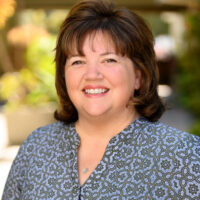The world of customer experience centers (#CXC) and executive briefing centers (#EBC) has changed dramatically over the past two years.
Briefing center executives and briefing program managers have relentlessly focused on reimagining the experiences they provide in order to deliver value – whether in person or in a virtual or hybrid setting.
This year, the Association of Briefing Program Managers (ABPM) 2022 Spring Conference in Silicon Valley was delivered as a hybrid conference. It’s a wonderful community of customer-focused professionals, and the conference is a celebration of innovations in the industry, from take-your-breath-away facilities to state-of-the-art virtual and hybrid experiences.
The decision to offer a hybrid experience was driven in part by ABPM’s desire to emulate the hybrid engagements that are being delivered by briefing centers all over the country. The organizers’ attention to detail and their interest in accommodating everyone regardless of location created a very rich experience.
I was delighted to be among 250 in-person attendees, and I felt the 80 remote participants were well integrated into the design. These designs are no small feat. Hybrid meetings and conferences are becoming more commonplace, and they require careful consideration to be successful. I was impressed with ABPM’s intentional design, technology, and content approach to create a successful hybrid event.
Here are a few elements that made it a success.
- Equal engagement is a priority. Remote attendees were far from an afterthought. In each session, the virtual participants appeared on screen, in the front of the room, in gallery view. A dedicated Remote Attendee Advocate sat in the room and monitored the virtual platform to make sure remote participants were able to add comments and ask questions in a thoroughly integrated way.
- Socializing is key. People go to conferences by and large for the social aspects. Acknowledging that the remote participants would not be gathering together, ABPM hosted virtual happy hours a week or two prior to the event to give everyone a chance to meet and engage with one another.
- Social distancing is not one-size-fits-all. The conference organizers devised a simple yet effective system for the in-person attendees to communicate their comfort level with personal contact. A color system on the name badges showed green for people who were open to hugs or handshakes, yellow for those who were comfortable with elbow bumps, and red for those who wanted to keep personal distance. This seemingly small gesture removed any awkwardness during the social activities, and I applaud ABPM for implementing it.
- In a hybrid setting, hardware is really important. In order to accommodate all of the presenters and their devices, organizers equipped each meeting room with Dell hybrid field kits that included video conferencing hardware and laptops. These in-room hybrid technology kits supported live conversation between session leaders, in-person conference participants, and remote conference participants. All of the presenters did a dry run the day before so that they would be comfortable with the technology and could focus on the delivery.
It’s clear that briefing programs and the professionals who design them will continue to experiment and innovate in order to deliver exceptional events that contribute to an organization’s strategy. Technology in this space is changing so quickly. Design, process, and delivery will need to keep pace. The key will be in designing thoughtful experiences that deliver value, whether in person, hybrid or virtual.
How are you deciding on whether to go virtual, hybrid, or in person with your next event? Email me at kyanoska@mandel.com
Karen Yanoska is Director, Digital-Driven Learning & Design at Mandel Communications







